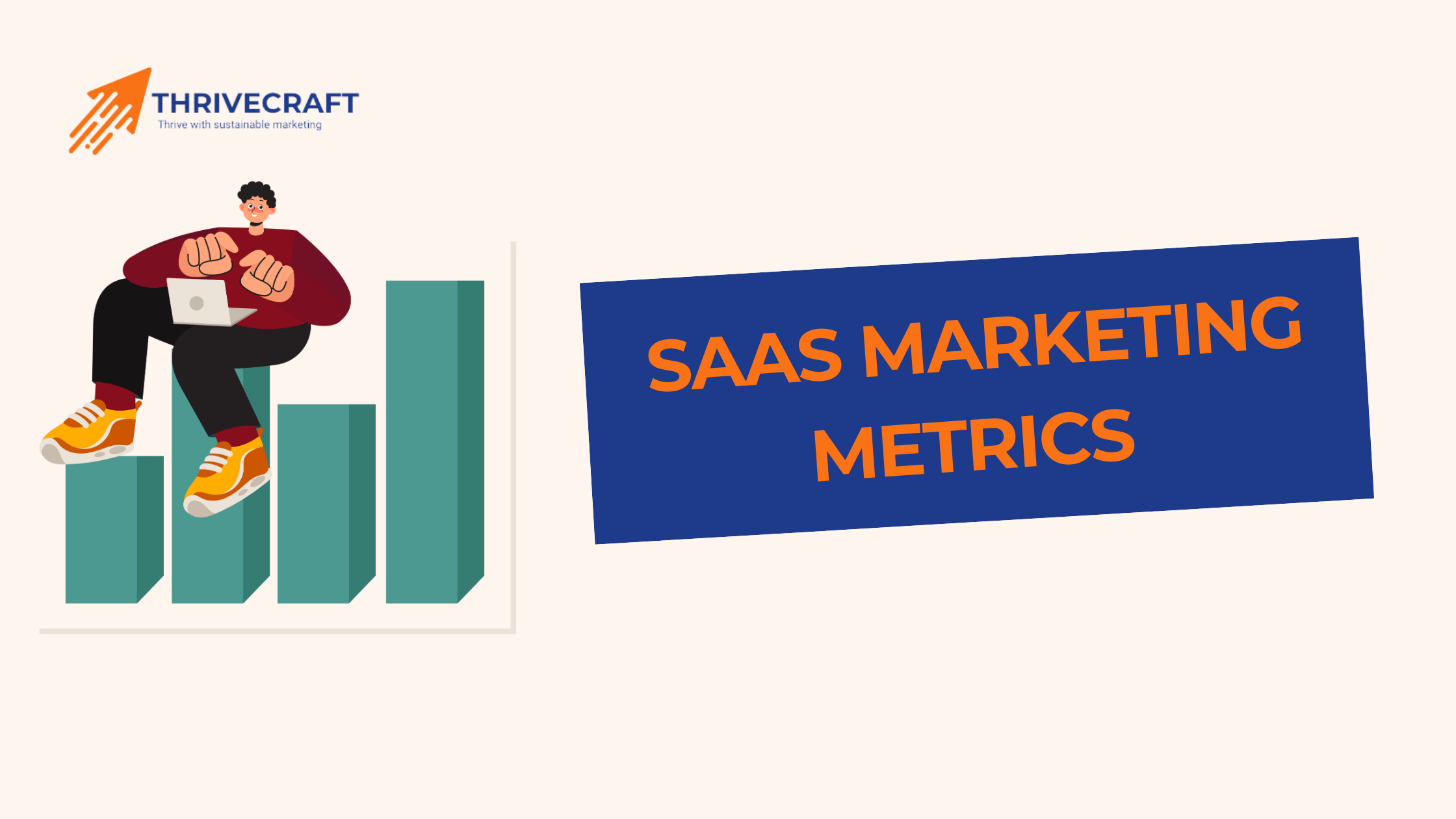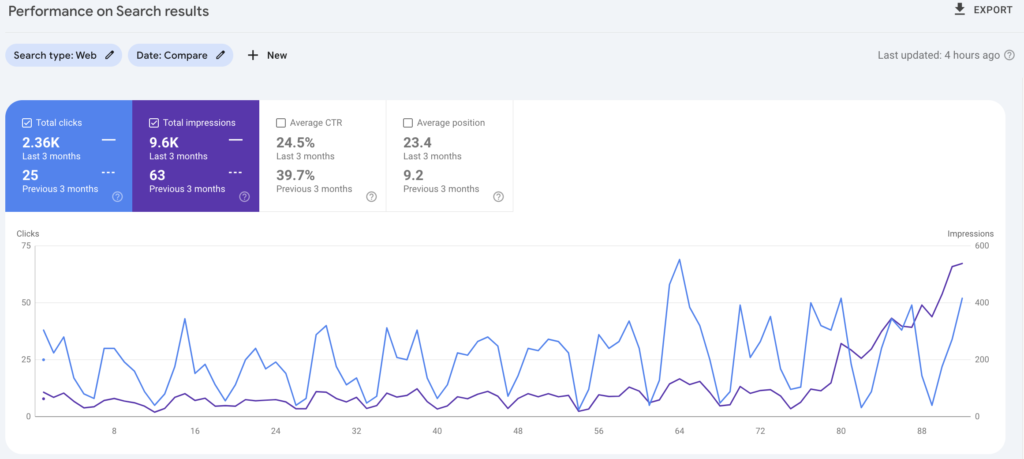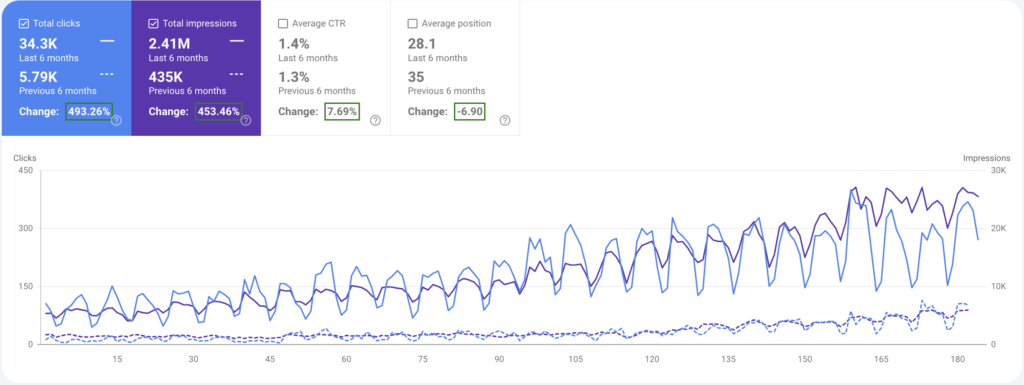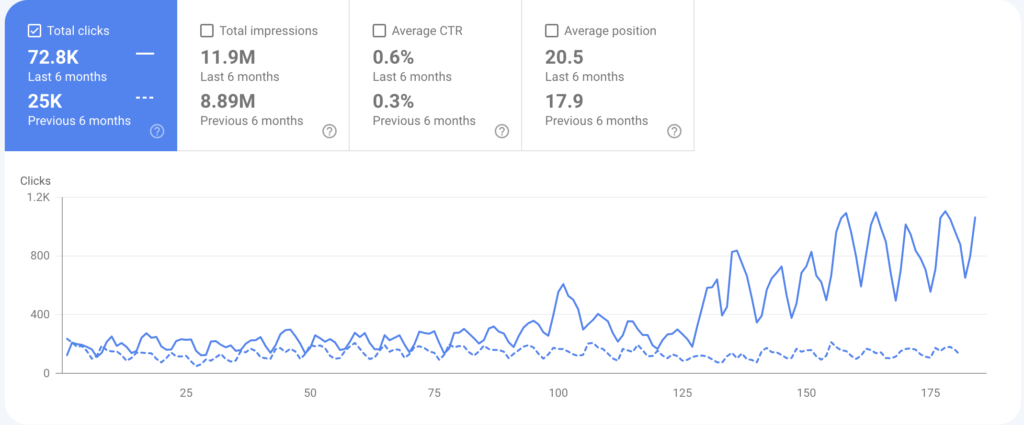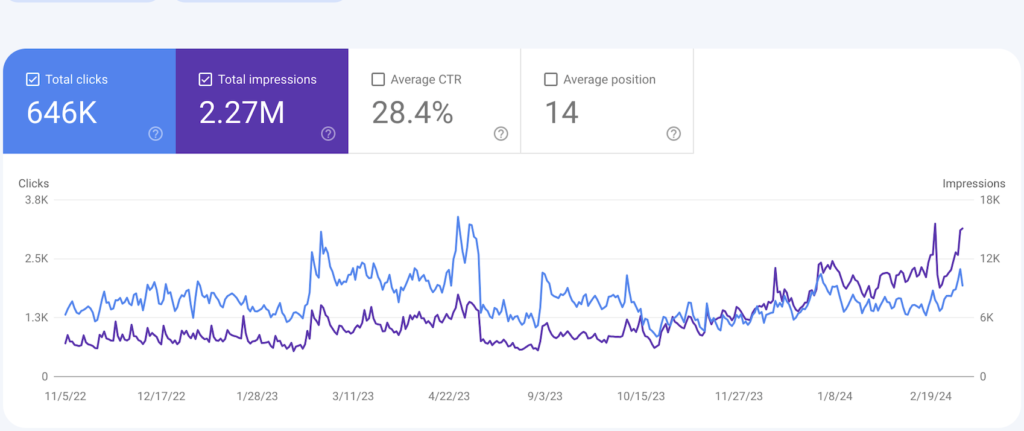SaaS marketing metrics have become crucial for businesses to remain competitive. Sustainable business growth lies in making data-driven decisions through SaaS marketing metrics, which provide a broad spectrum of growth.
These KPIs help companies track, analyze, and modify their marketing strategies to keep you a step ahead. SaaS companies are subscription-based and work on customer acquisition, retention, and revenue optimization. Tracking these metrics is vital for the business’s long-term sustainability.
Correct metrics can give insights into the business’s health, what needs to improve, and the actions that should be taken to achieve profitability. But tracking everything metric-wise could be overwhelming. The hidden key is to focus on focused insights that translate into growth.
Using the right tools like Google Analytics, Ahrefs, and HubSpot, companies can convert raw data into meaningful insights to have better inputs. Why do SaaS marketing metrics matter most?
When optimizing marketing ROI, growth opportunities, or working on better customer retention plans, it is crucial to have better guidelines.
At Thrivecraft, we help break down the most essential SaaS marketing metrics, how they affect the growth of a business, and how to measure and optimize them in an actionable way. We are experts in analyzing business performances and helping them to clear their success roadmaps.
Also, stay connected with us to learn how the right data points help your SaaS business grow efficiently and remain at the top of the list.
What are SaaS Marketing Metrics?
SaaS marketing metrics are key performance indicators (KPIs) that help to track, analyze, and optimize their marketing strategies. SaaS companies primarily focus on customer acquisition, retention, and revenue growth.
SaaS marketing metrics provide many benefits from customer analytics. They can change or refine the customer experiences. It is essential to monitor the right metrics. It helps to understand your business health and performance and encourages you to take practical, beneficial actions.
MRR, CAC, and Churn Rate offer insights into financial performance and customer behavior. Meanwhile, engagement metrics such as NPS and Conversion Rate clarify user satisfaction and marketing efficacy.
Why do Growth Metrics Matter?
Growth metrics provide valuable insights into performance, customer behavior, and revenue trends, particularly within SaaS. Basically, these metrics allow companies to assess current strategies and identify where improvement is needed. Business Health Analysis:
- Business Growth Analysis: Metrics such as Monthly Recurring Revenue, Customer Acquisition Cost, and churn rate allow you to analyze the company’s growth.
- Customer Retention Enhancement: By tracking churn rate and Net Promoter Score, you can enhance the customer experience and reduce the number of cancellations.
- Optimized Marketing ROI: Businesses can most effectively allocate their resources to maximize profits by analyzing Customer Lifetime Value versus Customer Acquisition Cost.
- Identify Growth Opportunities: It helps a business decide whether to enter a new market or to strengthen or refine its existing services.
The Role of Data in Business Growth
Instead of relying on intuition, businesses are using data to make informed decisions.
- Understand Customer Behavior: This allows tracking user engagement and product adoption for targeted marketing and sales efforts.
- Enhance Product Development: These insights show what SaaS solution features are primarily used by customers.
- Increase Revenue & Profitability: It analyzes and suggests pricing models with upsell and cross-sell opportunities. It also analyzes customer retention rates.
- Future Trend Forecasting: To stay one step ahead of competitors, predictive analytics shows the trends within an industry.
With tools like Google Analytics and Ahrefs, businesses can turn data into actionable insights for long-term growth.
How Tracking Metrics Leads to Better Decision-Making
Companies gain real-time visibility into business performance by monitoring KPIs. Here’s how it works:
- Data-Driven Marketing Strategies: Identify the valuable leads to which they can allocate their budgets.
- Optimized Sales Funnel: Conversion rates provide insight into improving the sales process and reducing drop-offs.
- Proactive Problem-Solving: If one sees declines in retention or revenue, one can adequately react before significant losses.
- Comparing Metrics: Metrics can be compared with others to see if a business is losing the competitive game.
How to Choose the Right Growth Metrics
Growth metrics help to track business success conveniently. Choosing the right metrics is crucial for your business model, growth stage, and objectives. Here are a few steps to select the right growth metrics.
Identify Key Performance Indicators (KPIs)
KPIs are specific, measurable values that indicate how well a business achieves its goals. To identify the right KPIs:
- Focus on Actionable Metrics: Choose metrics that provide insights such as Customer Acquisition Cost (CAC) or Monthly Recurring Revenue (MRR).
- Differentiate Between Vanity vs. Meaningful Metrics: While social media followers may look impressive, they don’t always convert into leads. Instead, try to focus on conversion, churn, and retention rates.
- Consider Business Stage: A startup should always focus on user acquisition and product-market fit, but in contrast, a scaling company might track CLV and expansion revenue.
Align Metrics with Business Goals
- Not all businesses should track the same metrics. Consider your industry niche, revenue model, and strategic goals when selecting a growth metric.
- Track CAC, Lead Conversion Rate, and Marketing ROI to ensure efficient spending on customer acquisition.
- Monitor Churn Rate, Net Revenue Retention (NRR), and Customer Satisfaction Score (CSAT) to identify pain points while retaining your customers.
- Focus on MRR, CLV, and revenue per user (ARPU) to maximize profitability and monitor revenue growth periodically.
Common Mistakes in Selecting Metrics
- Focus on Vanity Metrics: Instead, focus on metrics directly impacting revenue and retention. Website visits count or app downloads don’t always show the actual value.
- Too Many Metrics Tracking: Prioritize only meaningful KPIs rather than tracking everything.
- Ignore Customer Segmentation: Looking at overall churn or revenue without segmenting by customer type can lead to misleading conclusions.
- Adaption of Metrics Over Time: As a business grows, its key metrics transform. Startups may prioritize activation rates, while established companies focus on expansion revenue.
Essential Growth Metrics for Businesses
These are some of the key metrics that help to get insights into businesses’ revenue, profitability, customer acquisition, retention, and engagement measures.
Revenue and Profitability Metrics
These metrics focus on financial performance and revenue optimization.
Revenue Growth Rate
These metrics help to measure the performance of revenue in a given time.
Formula
Revenue Growth Rate = ((Current Period Revenue – Prior Period Revenue) / Prior Period Revenue) x 100.
Monthly Recurring Revenue (MRR)
This metric helps to predict monthly revenue generated from subscriptions.
Formula
MRR = Number of Customers x Average Revenue per User (ARPU).
Annual Recurring Revenue (ARR)
The yearly equivalent of MRR, ARR is used to measure long-term growth.
Formula
ARR=MRR×12ARR = MRR\times 12.
Gross Margin
The percentage of total revenue can be retained after deducting the cost of goods sold (COGS).
Formula
Gross profit margin = (Gross profit / Revenue) x 100.
Return on Investment (ROI)
It helps to measure the profitability of marketing or business investments.
Formula
(Sales Growth – Marketing Cost) / Marketing Cost.
Customer Acquisition and Retention Metrics
These metrics measure how efficiently a company is attracting and retaining customers.
Customer Acquisition Cost (CAC)
To measure newly acquired customers along with marketing and sales expenses.
Formula
CAC = (Total Sales and Marketing Costs) / (Number of New Customers Acquired).
Customer Lifetime Value (CLV)
The total revenue expectation from customers during their entire service period.
Formula
CLV = Average Customer Value × Average Customer Lifespan.
Churn Rate
The percentage of customers who cancel their subscriptions over time.
Formula
Churn Rate = (Number of customers lost during a specific period / Number of customers at the beginning of that period) x 100.
Retention Rate
The percentage of customers who renew their subscription.
Formula
Retention Rate = (Ending customers – New customers) / Starting customers x 100.
Net Promoter Score (NPS)
It measures customer satisfaction and product referrals.
Formula
NPS = % promoters – % detractors.
Conversion and Engagement Metrics
These metrics analyze the practical conversions and engagement.
Conversion Rate
This measures the percentage of lead conversions and paid to sign up for the services.
Formula
Conversion rate = (conversions ÷ total audience) x 100.
Average Revenue Per User (ARPU)
This calculates the average revenue generated per customer periodically.
Formula
ARPU=Total Revenue / Total Number of Users.
Product Adoption Rate
The percentage of new users who start actively using a product or feature.
Formula
Product Adoption Rate = (New Engaged Users / Total Signups) x 100.
Customer Repeat Purchase Rate
This metric gives you the data of customers who make multiple purchases periodically.
Formula
Repeat Purchase Rate = (Number of customers who made multiple purchases / Total number of customers) x 100.
Cost Per Lead (CPL)
The average cost of acquiring a potential customer (lead).
Formula
CPL = Total Marketing Spend / Total Leads Generated
Growth Metrics by Industry
Different industries have unique key metrics that vary depending on business models. These are essential growth metrics for SaaS, E-commerce, and Startups.
SaaS Growth Metrics
- Expansion Revenue: This helps measure revenue growth from existing customers through any selling medium. Formula: Expansion MRR = Ending Expansion MRR – Beginning Expansion MRR.
- Logo Churn vs. Revenue Churn: Logo Churn measures the percentage of lost customers, whereas Revenue Churn measures the loss rate due to customer subscription cancellations.
| Formula | |
| Logo Churn | Total Customers Lost / Total Customers at Start of Period × 100 |
| Revenue Churn | Revenue Lost / Total Revenue at Start of Period × 100. |
- Payback Period: This is when customer acquisition costs recover through customer revenue. Payback Period: Customer Acquisition Cost (CAC) / Monthly Gross Margin Per Customer.
- Quick Ratio for SaaS Growth: It is a ratio that offsets revenue loss with new revenue. Quick Ratio: New MRR + Expansion MRRChurned MRR + Contraction MRR.
E-commerce Growth Metrics
- Cart Abandonment Rate: The percentage of users who do not complete their purchases of their cart items. Cart Abandonment Rate = (Carts Created – Completed Purchases) × 100.
- Average Order Value (AOV): The average revenue from the total purchase. AOV = Total Revenue / Total Orders.
- Return Rate: The percentage of the value of returned products. Return Rate = Returned Orders / Total Orders × 100.
- Customer Support Response Time: The average response time to customer inquiries. Response Time = Total Response Time / Total Customer Queries.
Startup-Specific Growth Metrics
- Burn Rate and Runway: The rate of cash spent before generating profit, while Runway is when a startup can operate before running out of money.
| Formula | |
| Burn Rate | Starting Cash – Ending Cash / Time Period (Months) |
| Runway | Available Cash / Monthly Burn Rate |
- Virality Coefficient: It measures how quickly a product spreads through word-of-mouth referrals. Virality Coefficient = Average Referrals per User / Conversion Rate of Referrals.
- Retention Cohorts: It tracks how long customer segments remain engaged after sign-up. Retention Rate = Users Active on Day 30 / Total Users on Initial Day / 100.
How to Measure and Analyze Growth Metrics
Every growth metric is crucial for understanding the pathway of business success by analyzing its performance and making data-driven decisions. These are effective data tracking and analysis of growth metrics to drive business success.
Set Up Effective Data Tracking
Before analyzing metrics, you should define key performance indicators (KPIs) and clear measurement criteria to establish data sources.
Choose the Right Analytics Tools
The right tool eases data tracking and reporting to enhance business performance.
- Web Traffic Analysis: Use tools like Google Analytics to track traffic and Mixpanel to analyze product and user engagement.
- Revenue & Customer Analytics: To track sales and marketing growth, use Baremetrics to track MRR, LTV, and Churn.
Best Practices for Data Collection
Accurate and structured data collection ensures reliable insights. Use single-source tools to consolidate data from multiple platforms.
- Centralize Data Source: A data dashboard tool like Google Data Studio or Tableau combines website analytics, CRM data, and financial reports.
- Ensure Data Accuracy: Use automatic data entry and standardized department metric definitions to reduce human errors.
- Data Tracking Periodically: Monitor weekly, monthly, and quarterly trends to compare time-to-time growth.
Automate Growth Metrics Tracking
Automation is better than manual tracking in improving efficiency and accuracy.
- Use BI Tools: Tools such as Looker provide real-time insights into business performance.
- Set-up Alerts: Automate alerts in every metric tool to notify the team of significant changes.
- Automate Reporting: Weekly or monthly reports help to track key metrics.
Analyze Growth Metrics for Actionable Insights
- Identify Trends and Patterns: Always look for growth patterns, such as steady revenue increases and seasonal dips. Compare metrics across different periods to identify top-performing acquisition channels for optimization. Also, incorporate some of these B2B blog strategies to outrank competitors.
- Make Data-Driven Business Decisions: If customer acquisition cost (CAC) rises, invest in organic marketing strategies to reduce expenses. If the Retention rate is low, focus on customer success initiatives to increase loyalty. Introduce bundle pricing or upselling strategies if AOV decreases.
Avoid Pitfalls in Growth Analysis
Pitfall #1: Tracking Too Many Metrics
- Issue: Focusing on too many metrics can lead to data overload.
- Solution: Prioritize 3-5 key growth metrics aligned with business goals. Also, keep a regular content audit for better improvement.
Pitfall #2: Ignoring Data Context
- Issue: A spike in traffic doesn’t always mean success—it could be low-quality visitors.
- Solution: Always correlate growth metrics with user intent and behavior.
Pitfall #3: Relying on Vanity Metrics
- Issue: High website traffic doesn’t always mean higher conversions.
- Solution: Focus on metrics that impact revenue, retention, and customer lifetime value. Always protect yourself from SEO scammers by following these tips and tricks.
Pitfall #4: Failing to Act on Insights
- Issue: Collecting data but not applying insights to improve strategies.
- Solution: Set up monthly review meetings to act on key findings.
The Importance of Metrics in Optimizing Growth Strategies
Metrics are essential to make beneficial data-driven decisions. These decisions are crucial to improve customer retention, enhance revenue streams, and reduce acquisition costs by analyzing business performance.
How to Improve Customer Retention
- Enhance Customer Experience: You can help users understand product value by providing seamless onboarding support. Optimize customer support with fast response times for proactive issue resolution. Incorporate the best white label SEO services to enhance customer experience seamlessly.
- Personalization and Engagement Strategies: Customer data can generate personalized AI recommendations. To implement loyalty programs, send tailored emails and offers.
Ways to Reduce Customer Acquisition Cost
- Improve Marketing ROI: Always ready to invest in high-converting implementation such as SEO, email marketing, or social media marketing. Optimize paid ad campaigns and target the right audience.
- Leverage Referral and Organic Channels: Encourage referral marketing by building an active online community. It will boost organic brand awareness.
Increase Customer Lifetime Value
- Cross-Selling and Upselling Strategies: Increase Cross-selling and Upselling of your products or services.
- Maximize Subscription and Loyalty Programs: Offer loyalty programs to increase the number of repeat purchases and subscriptions.
Optimize Pricing Strategy for Better Revenue Growth
- Use Data to Set Competitive Prices: Analyze competitor pricing to offer your customers dynamic pricing strategies based on the competitive market structure.
- A/B Testing Pricing Models: To identify optimal conversion rates, test different price points. It can also help to experiment with bundled pricing and freemium models.
Future Trends in Growth Metrics
Here’s the information on future trends in growth metrics.
The Role of AI and Predictive Analytics
Artificial intelligence (AI) and predictive analytics are revolutionizing growth strategies. It enables data-driven decision-making and improves customer insights by optimizing marketing efforts.
How AI is Transforming Growth Tracking
- Real-Time Data Processing: AI can analyze vast datasets in real time. This allows businesses to transform quickly according to the latest trends and customer behavior.
- Predictive Growth Insights: AI uses historical data and trend analysis to forecast revenue growth, churn rates, and demand fluctuations.
- Automated Performance Optimization: AI is beneficial in adjusting marketing campaigns, ad targeting, and pricing strategies automatically based on performance metrics.
Using Machine Learning for Smarter Decision-Making
- Customer Segmentation & Personalization: Machine Learning algorithms analyze customer behavior to create highly targeted marketing campaigns.
- Churn Prediction & Retention Strategies: ML helps identify at-risk customers and trigger personalized retention offers.
- Sales & Demand Forecasting: ML predicts seasonal trends, inventory needs, and revenue fluctuations to help businesses make data-driven investments.
The Shift to First-Party Data
Businesses must shift toward first-party data strategies, which is important to maintain data-driven marketing and personalization.
Privacy Regulations and Their Impact
Key Regulations to Consider:
- GDPR (General Data Protection Regulation) Europe: Requires explicit user consent for data collection.
- CCPA (California Consumer Privacy Act) USA: Gives consumers control over how businesses use their data.
- Google’s Cookie Phase-Out: Chrome will eliminate third-party cookies by 2024, impacting ad tracking.
Strategies for Collecting and Leveraging First-Party Data
- Encourage Direct Customer Interactions: Use newsletters and tailored content to offer exclusive discounts or personalized recommendations in exchange for user data.
- Invest in Zero-Party Data Collection: Information that customers willingly provide, such as preferences, interests, and purchase intent.
- Strengthen CRM & Loyalty Programs: Use customer relationship management (CRM) systems to store and analyze first-party data. Reward customers for sharing preferences through loyalty incentives.
Case Studies: How Companies Use Growth Metrics
Real-world case studies highlight growth metrics strategies to drive profits, customer retention, and operational efficiency.
How a SaaS Company Reduced Churn with NPS Analysis
- Challenge: Customers will cancel their subscriptions faster than expected if a SaaS company notices a high churn rate.
- Solution: Net Promoter Score (NPS) implementation surveys measure customer satisfaction. Feedback analysis is needed to identify pain points in onboarding and customer support.
How an E-commerce Brand Increased AOV Through Personalization
- Challenge: If a fashion e-commerce brand wants to increase Average Order Value (AOV) but struggles with one-time low-value purchases.
- Solution: Use AI-powered recommendations to offer personalized product suggestions. For example, suggest that customers buy “frequently bought together” products.
How a Startup Extended Runway by Optimizing Burn Rate
- Challenge: A VC-backed startup with 12 months of cash left before funding runs out (runway) must extend it to reach profitability.
- Solution: Conduct a detailed cost audit and shift to performance-based marketing to eliminate non-essential expenses. It will help to reduce CAC by focusing on organic referrals.
Conclusion
To sustain business growth, it is crucial to track and optimize the right SaaS marketing metrics. By closely monitoring customer acquisition, engagement, retention, and revenue, you can gain insights into what is working and what requires improvement.
Remember, metrics do not guarantee success. Strategic decisions informed by data affect the bottom line. Continuously modify the approach, test various strategies, and consult with analytics tools as you evolve the SaaS business.
Whether you are a startup scaling to the max or a business fine-tuning an established company, these analytics will help get more customers and lead to quicker profitability.
Ready to scale more innovative and faster? ThriveCraft helps SaaS brands like yours decode complex marketing metrics. We provide high-impact strategies that drive revenue, increase retention, and optimize every stage of the customer journey.
From data-driven analytics that optimize marketing to performance. We have expert solutions to meet your business needs.
The time has come to act. Schedule a free measurable session with us to analyze and optimize SaaS marketing to accelerate growth and remain competitive in the market.
Frequently Asked Questions (FAQs):
How Often Should Businesses Track Growth Metrics?
Businesses should track growth metrics regularly, ideally at least monthly.
What is the Most Important Metric for Startups?
The North Star Metric (NSM) is crucial for startups—it reflects the core value delivered to users. The balance between Customer Acquisition Cost (CAC) vs. Lifetime Value (LTV) is equally vital. A sustainable LTV/CAC ratio ensures profitability while monitoring retention and churn rates.
How can Small Businesses Leverage Data for Growth?
Data a business collects can be used in many ways including identifying customer preferences and trends.
Which Growth Metric is the Best Indicator of Long-Term Success?
The Net Promoter Score is one of any company’s most crucial growth metrics, irrespective of which industry you work in. This score measures customer loyalty by asking users how likely they are to recommend your product or service to others.

